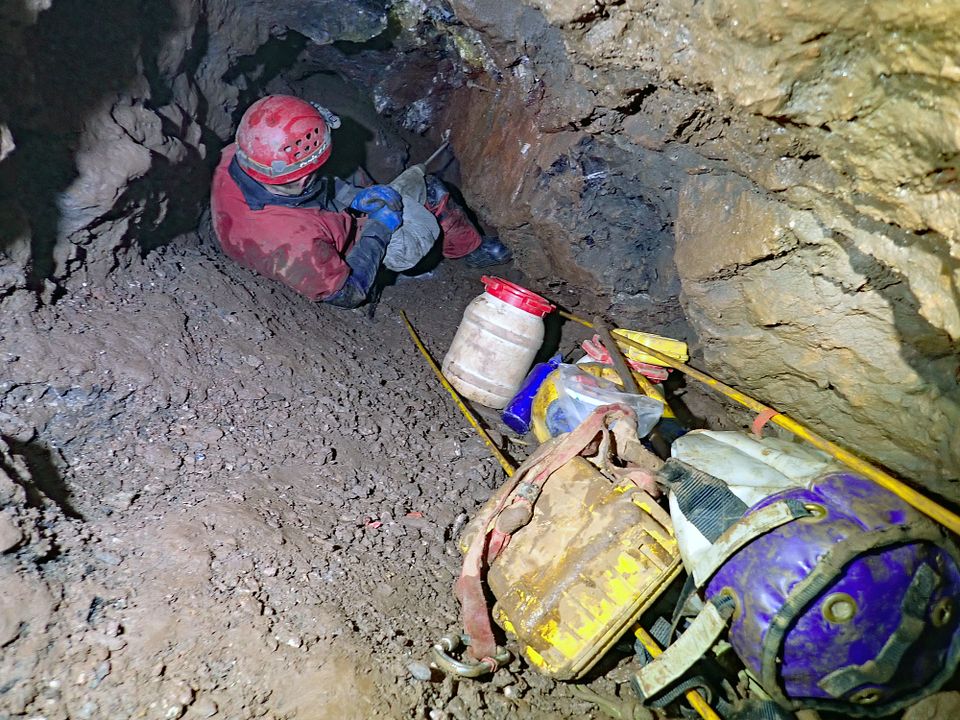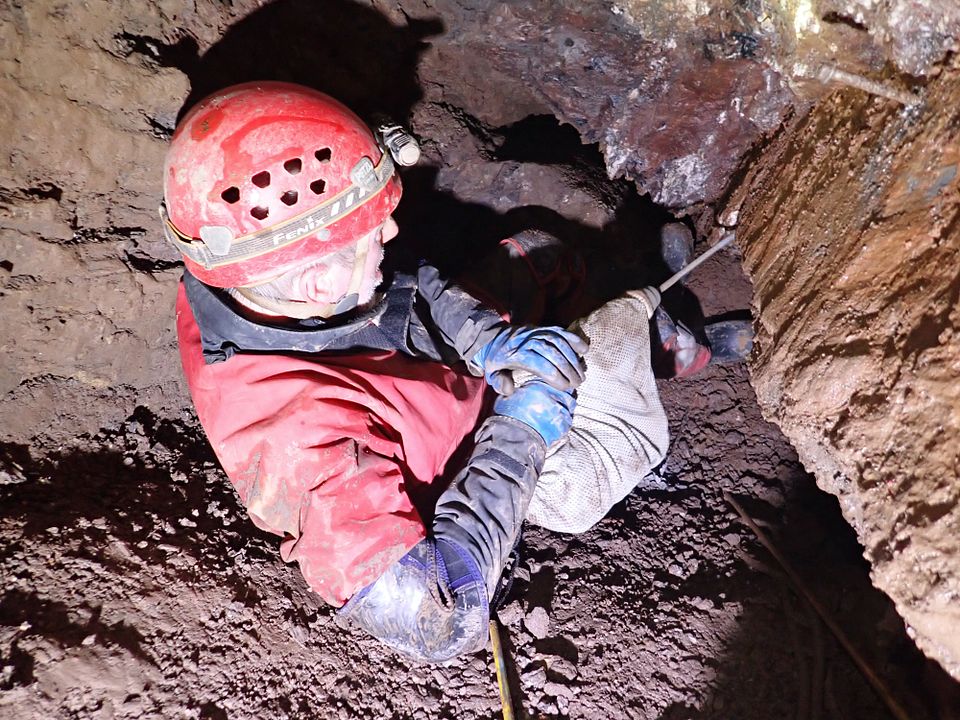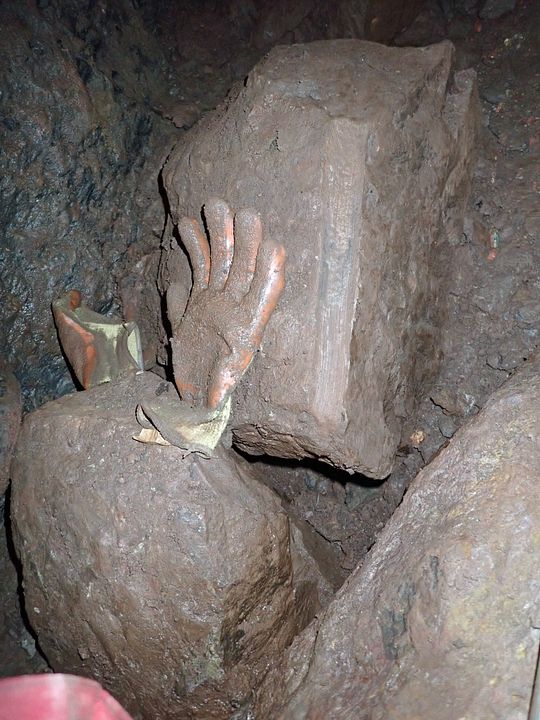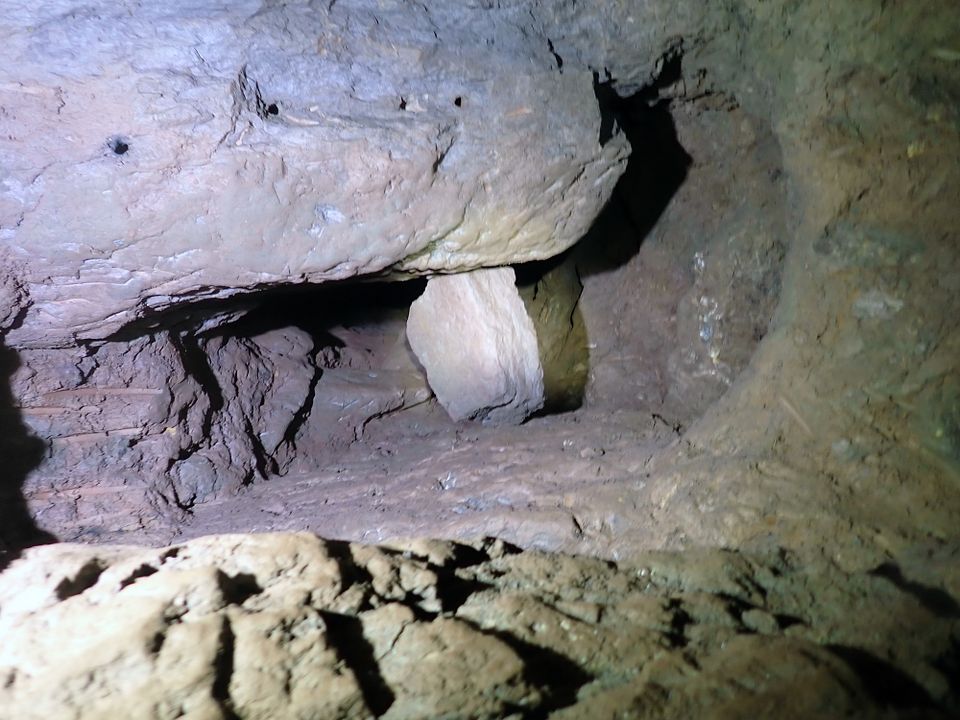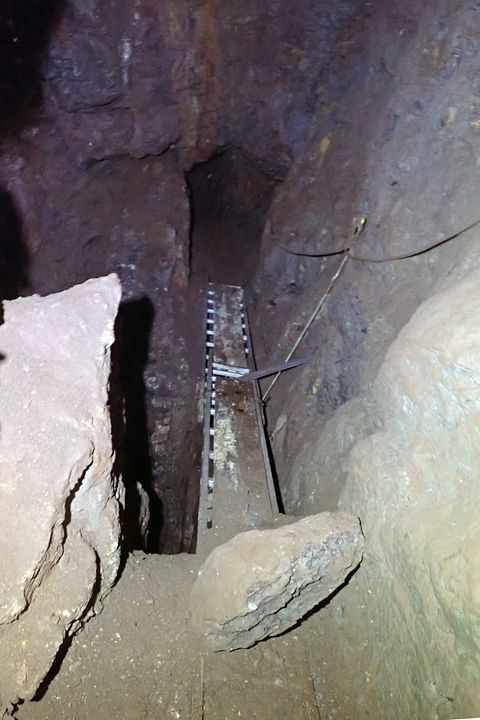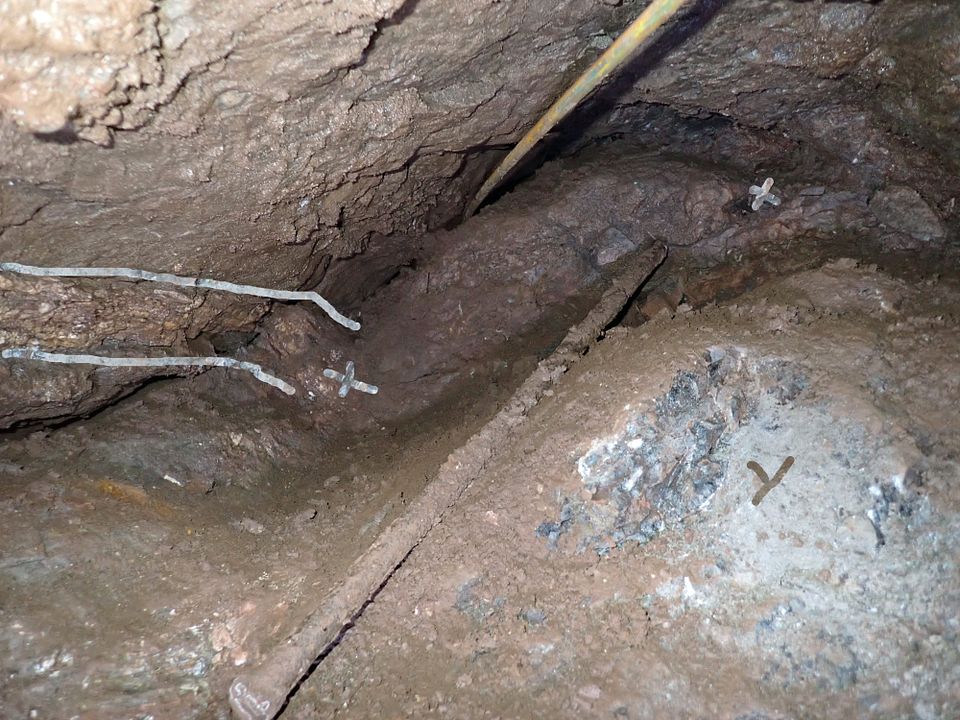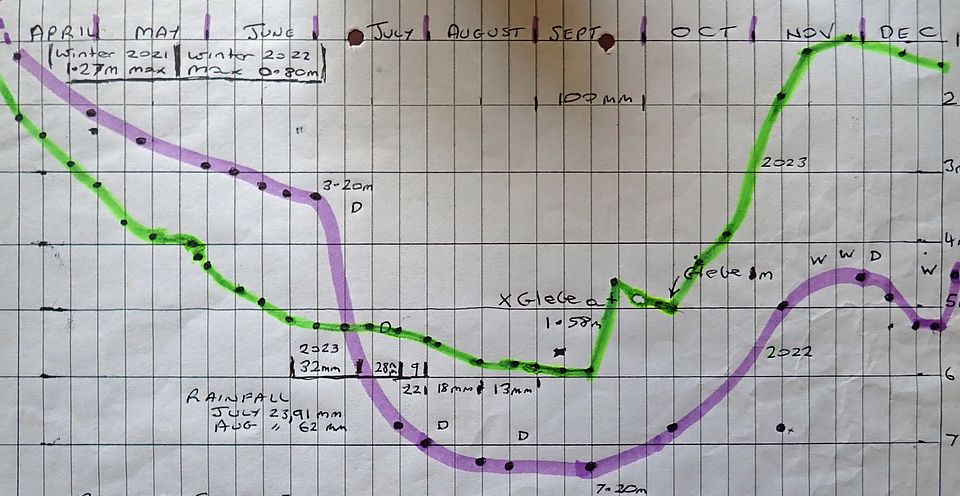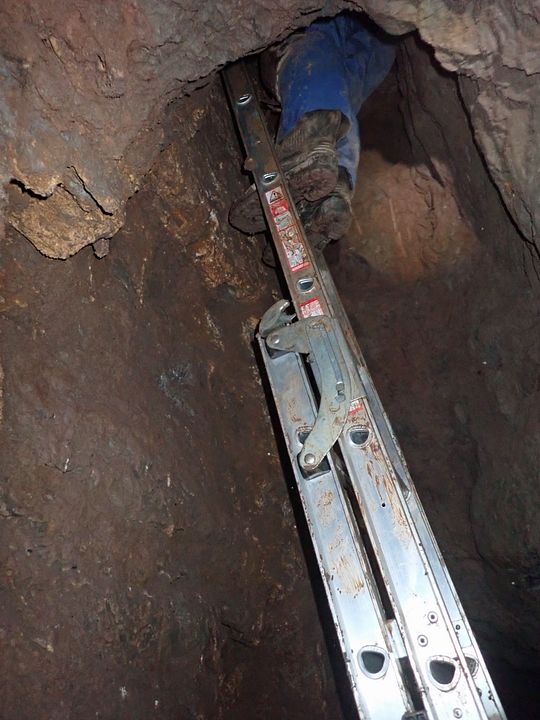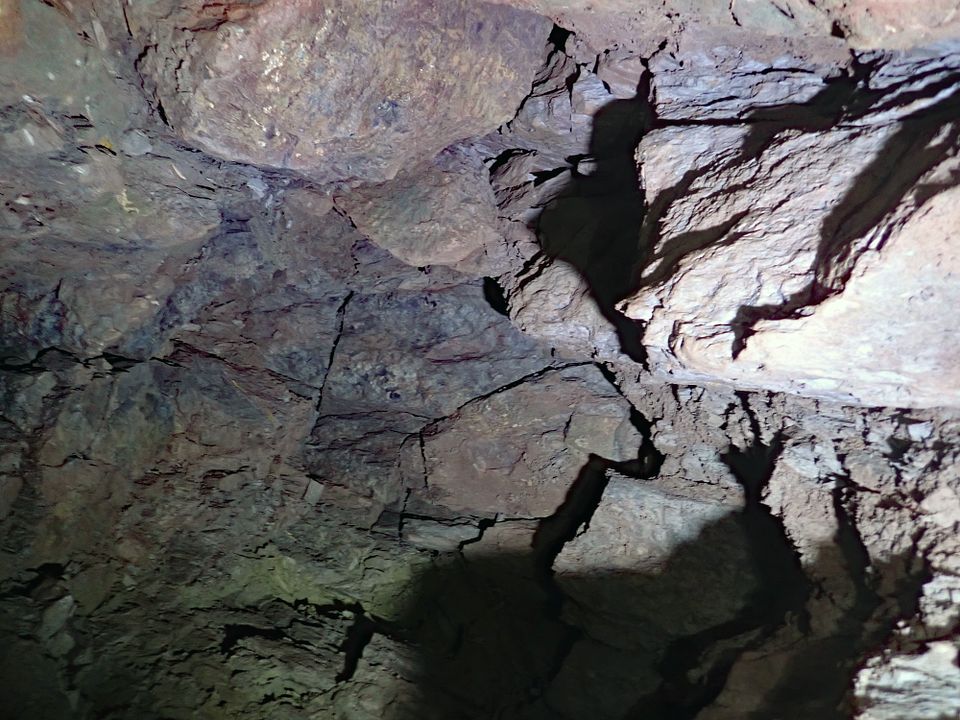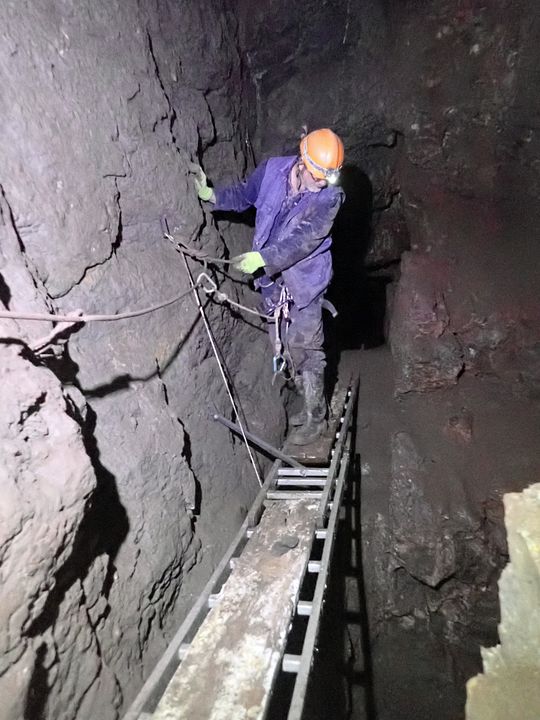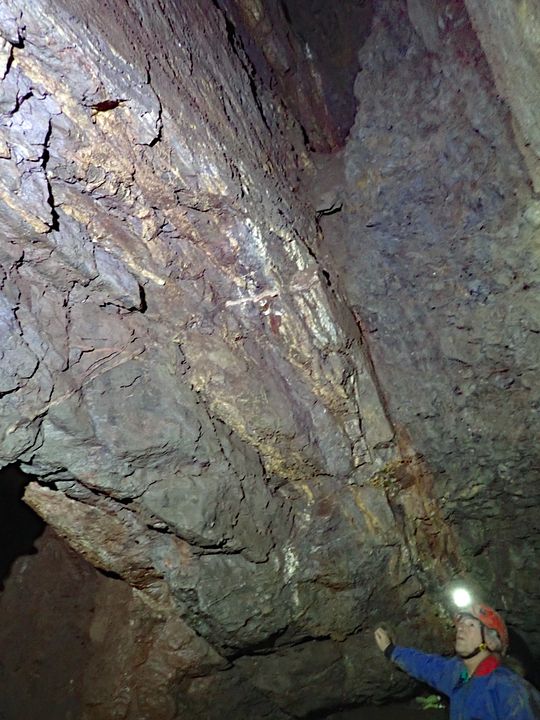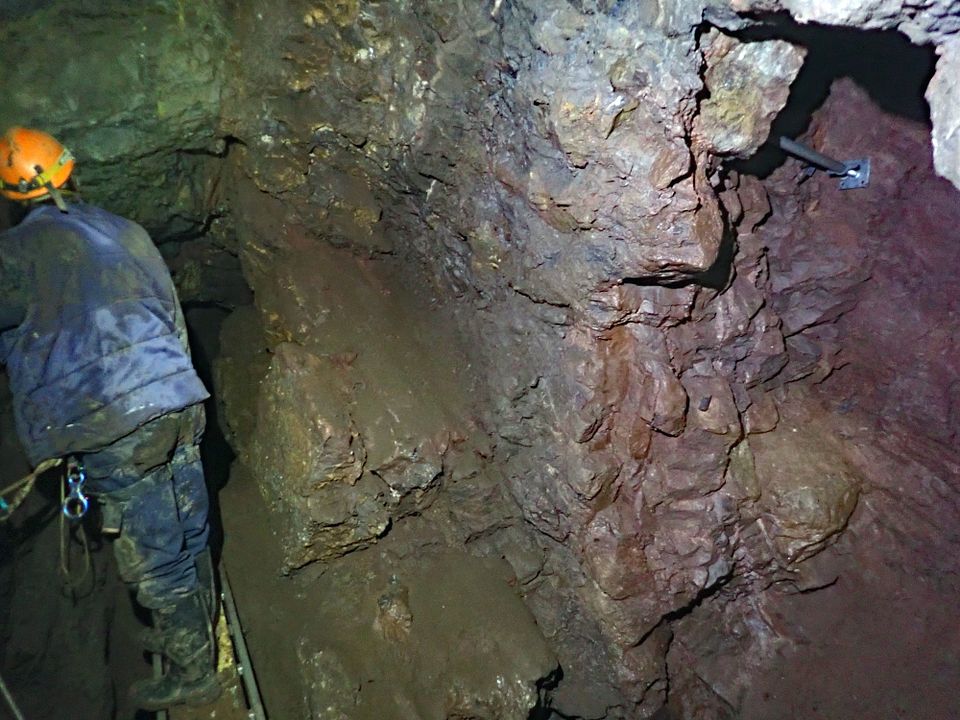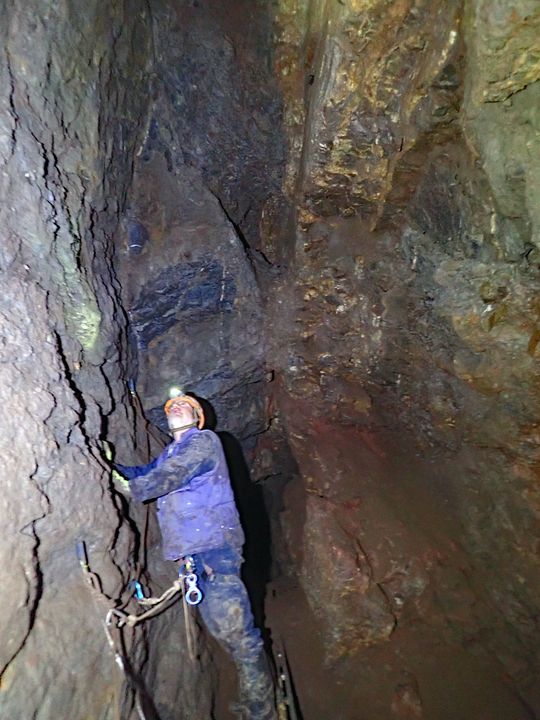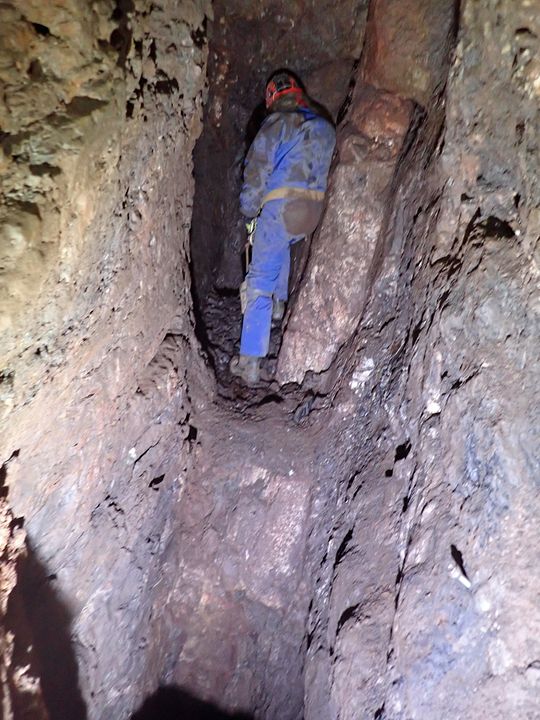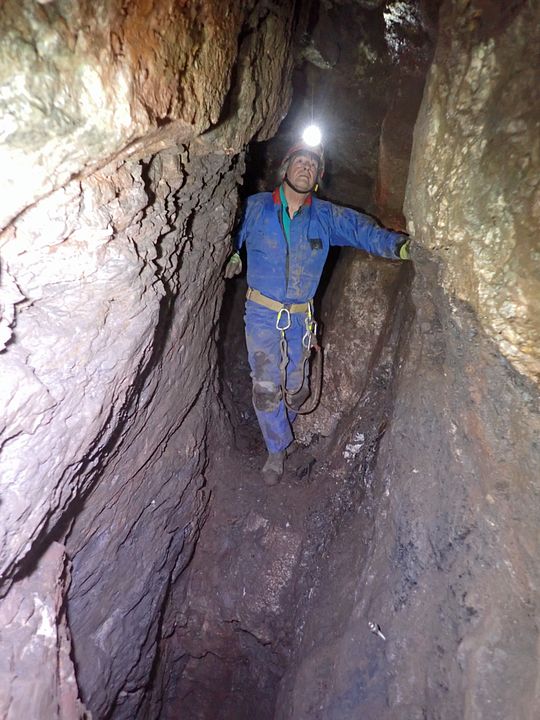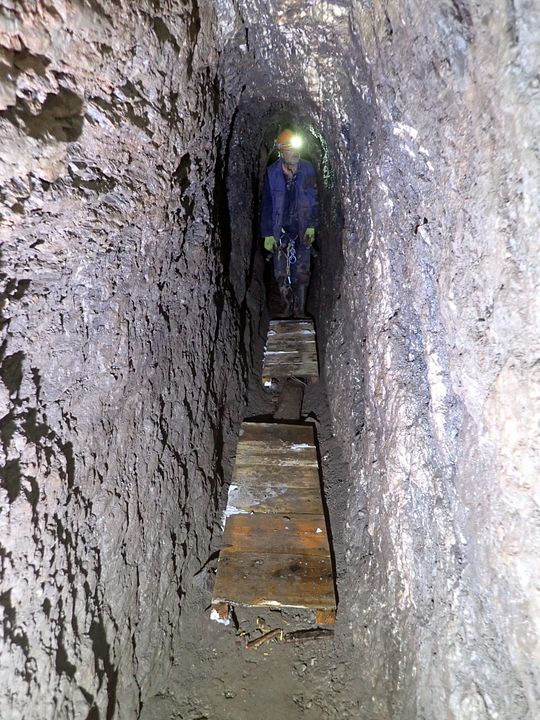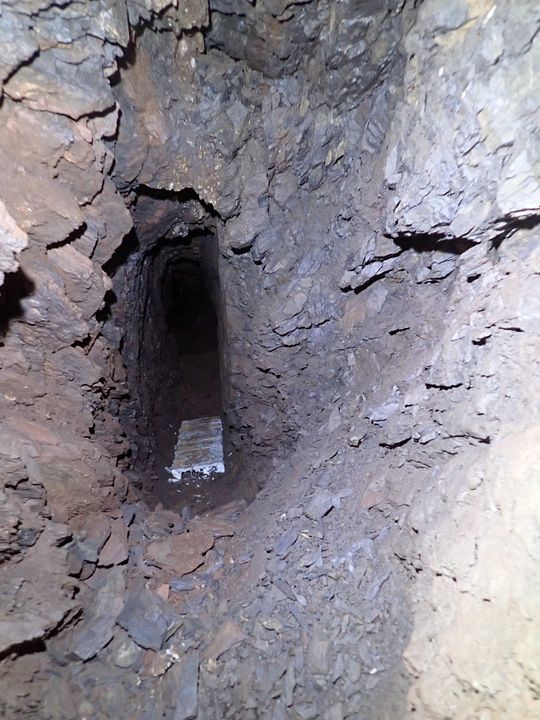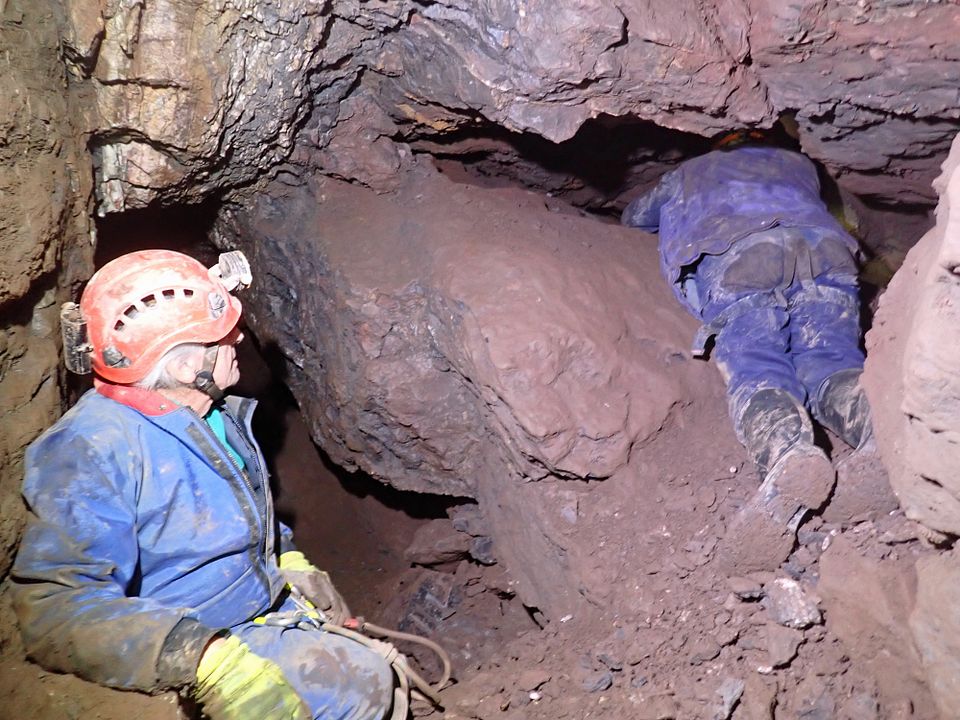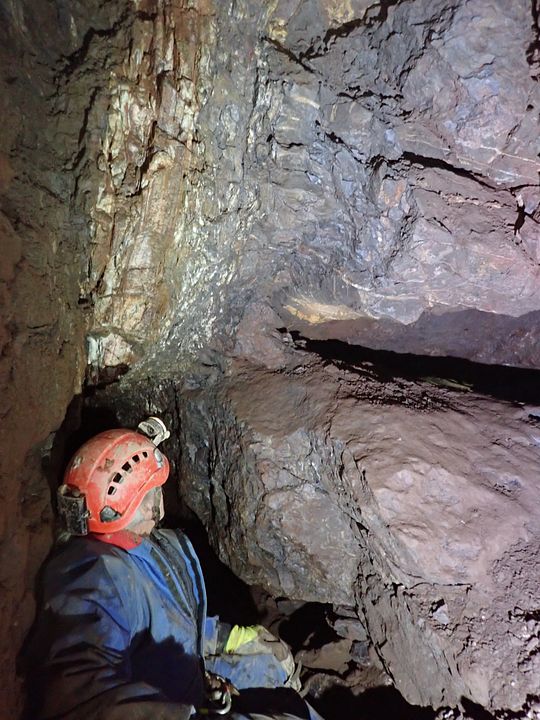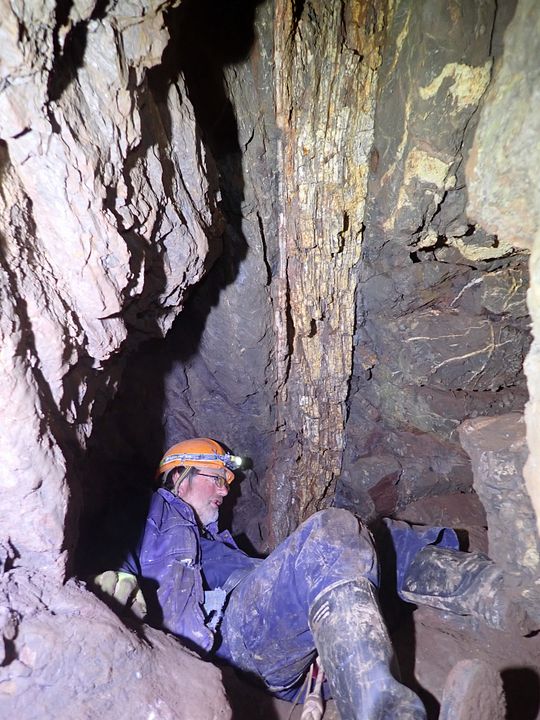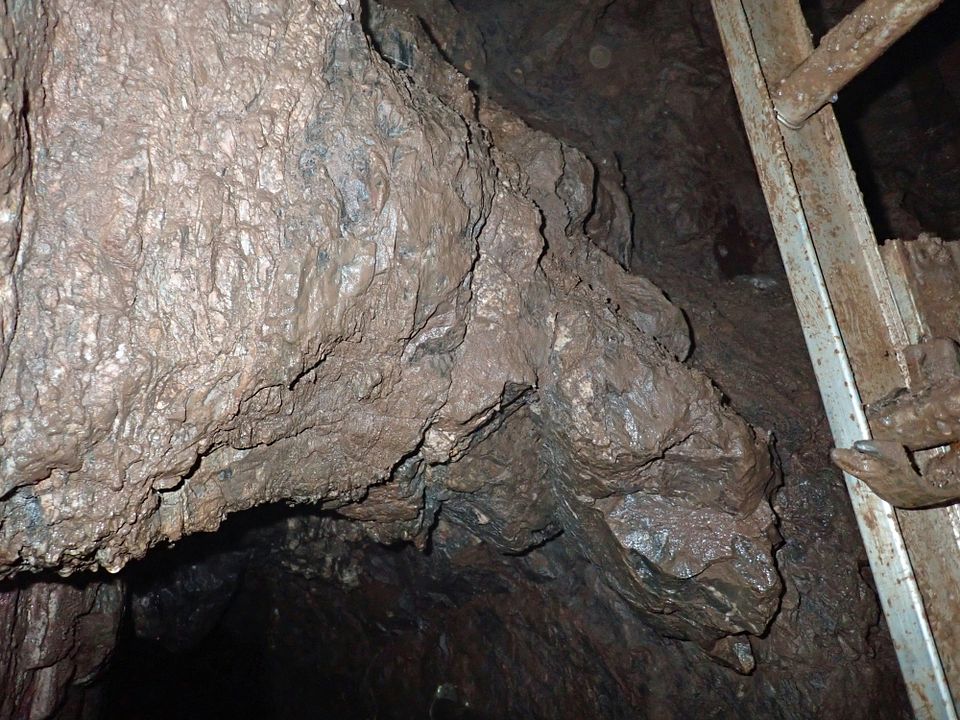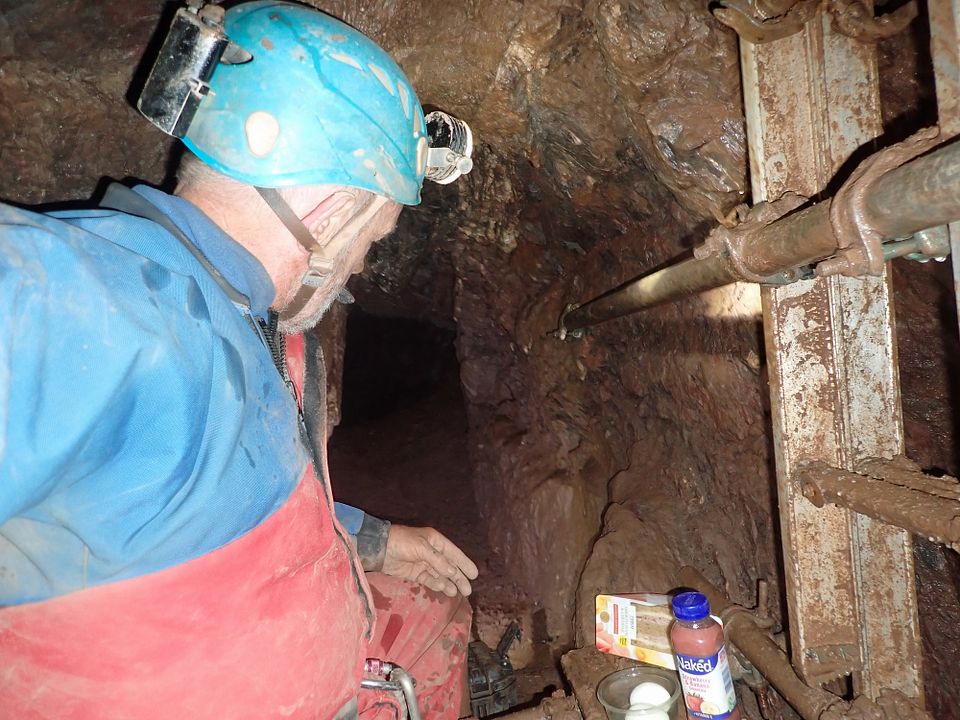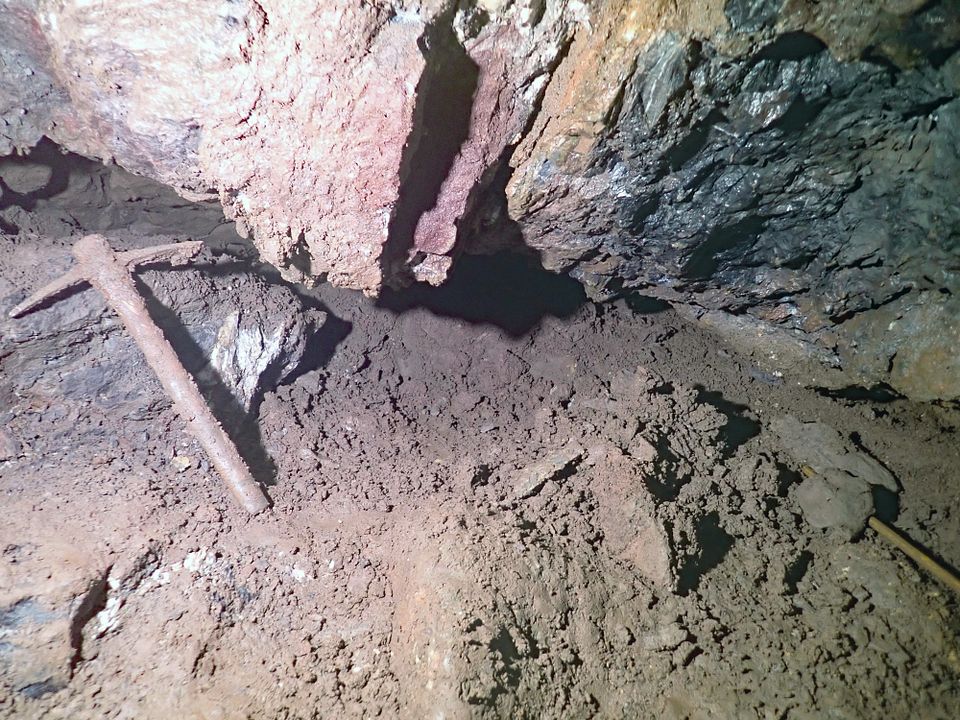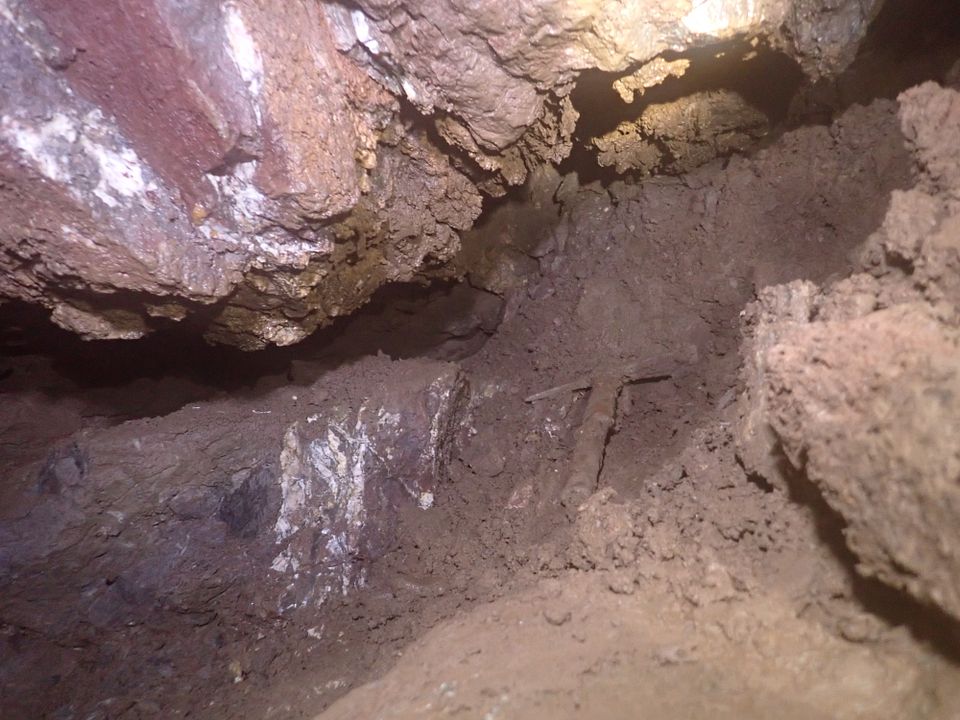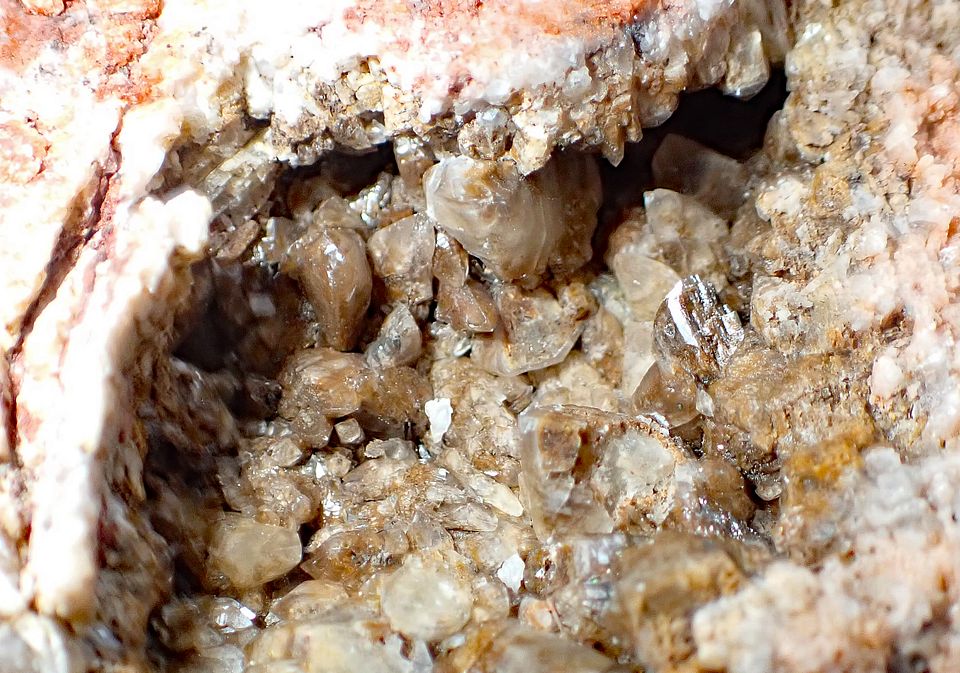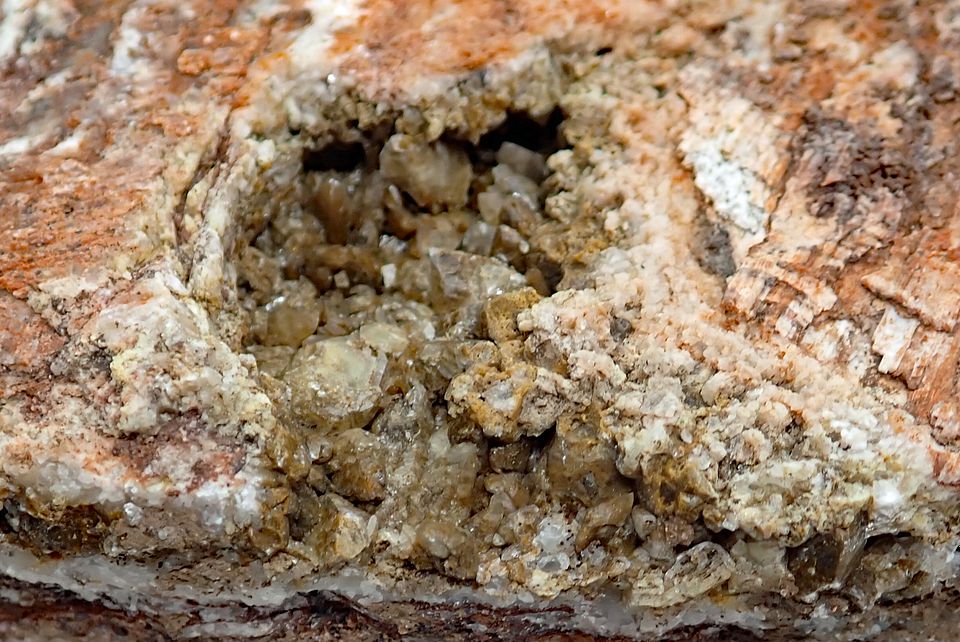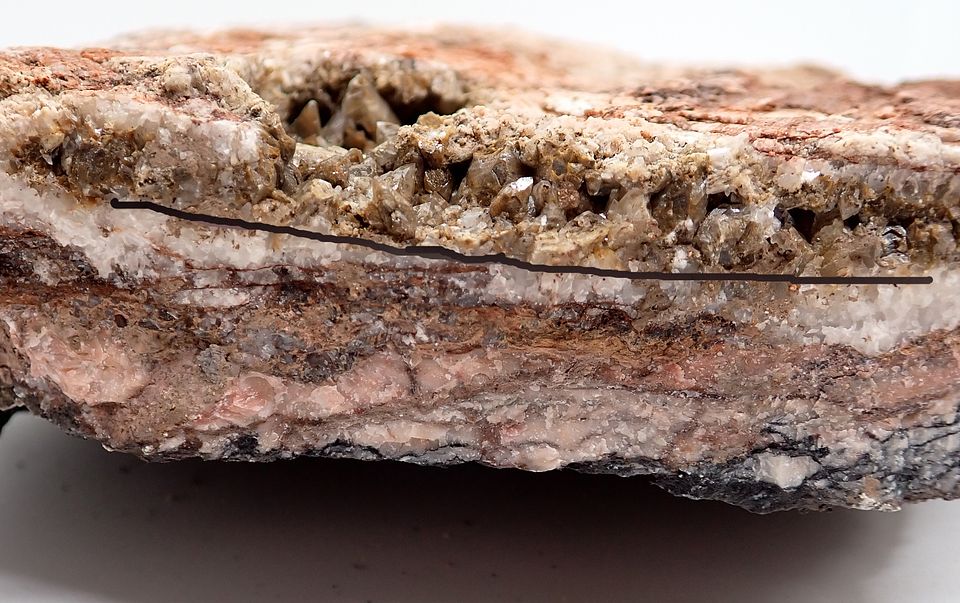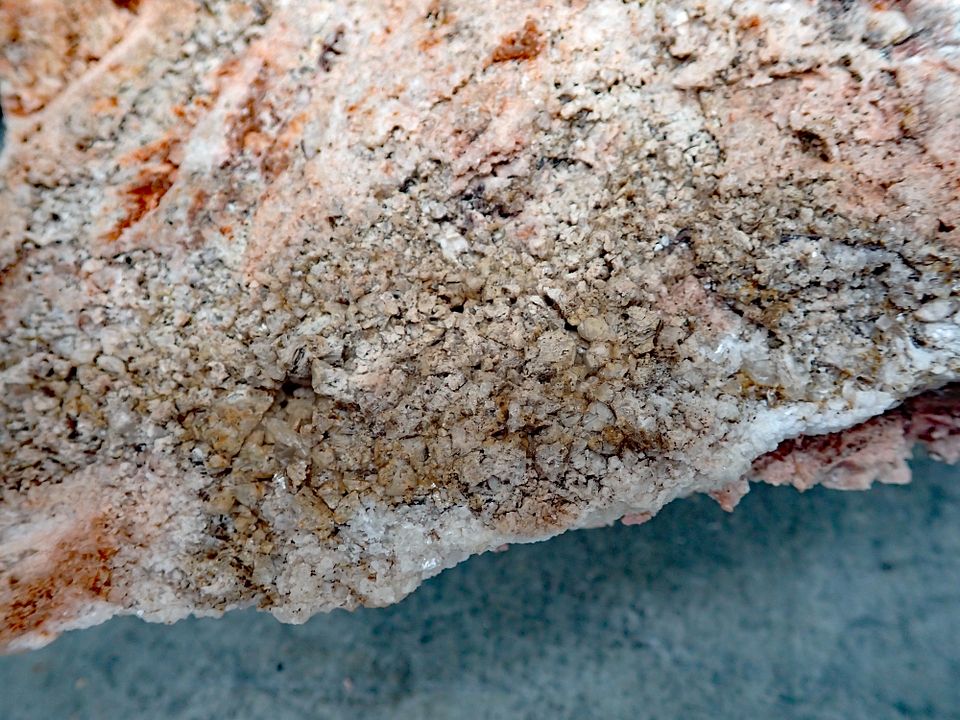The Old Ruminator
Well-known member
You may note a hint of irritation in my latest group ( team ? ) email. I may well have a finger prod on the old pc and knock up a piece about team digging. Ins and outs as it were.
Met Mike at 4.30 . We had loads of kit to carry so the plan was simplified. To be honest I was a bit piqued that Peter was going to Cothelstone on Monday with Martin rather than support efforts at the shaft .I did suggest he go up yesterday to do the holes in the other bit but he could not. 4.30 too late. Yes I know I did not get home until nearly 10pm. Anyway just two holes at that site is never enough as you need three in the floor and one in the boulder.
Mike started drilling here is his report.
"1x900mm, 5 x 600mm, 1 x 500mm and 2 x 400mm. Thermal cut out on the drill operated about 700mm into the 900mm hole. The drill was red hot and smoking big time. A couple of minutes later, it was working again, but still almost too hot to hold "
In the meantime I measured the water at 700mm. Then on my way to the other site I took a photo of the big drilled dead . The same diameter hole as the ones in the shaft.Thus denoting the origin of said boulder and showing that that part of the level is older. Going on I saw a pile of rocks below Brian's aven dig ( where he found God ). There had been a collapse from up there since last week. One rock remain jammed across the aven high up. I Cleared some of the debris down the shaft.Onwards over the bridge to " The Other Place ". The new probe went just over the top of the boulder for a metre finding no space anywhere.A bit of lode passes through on the left. The boulder is bigger than I thought.
Back to Mike struggling with the drill. We had probed forward 3.4m adding another metre to the probe done last week. Just got out in time to see the sun sinking in the west. All accomplished.
Review..
" The Other Place " would need a serious one off visit. A trip in itself if its worth progressing. Certainly not together with another effort in THITW. As THITW is the priority and will need a lot more work I cant see much happening at TOP unless Peter deals with it seperately. Personally I dont hold out much hope up there. THITW is progressing well. We make about 700mm per double trip. The airspace leads on and widens down to the right. I was annoying Mike by levering more bits out of the roof whilst behind him. At least the end bit is dry now.
Addition.
Brian was digging up in the aven when a large boulder fell on his head. It knocked his light out so all went dark. He thought " Is this death because it did not hurt ? " Me shouting up broke the spell. Perhaps we will call the aven " Brian In Heaven ".
Last nights video.
Met Mike at 4.30 . We had loads of kit to carry so the plan was simplified. To be honest I was a bit piqued that Peter was going to Cothelstone on Monday with Martin rather than support efforts at the shaft .I did suggest he go up yesterday to do the holes in the other bit but he could not. 4.30 too late. Yes I know I did not get home until nearly 10pm. Anyway just two holes at that site is never enough as you need three in the floor and one in the boulder.
Mike started drilling here is his report.
"1x900mm, 5 x 600mm, 1 x 500mm and 2 x 400mm. Thermal cut out on the drill operated about 700mm into the 900mm hole. The drill was red hot and smoking big time. A couple of minutes later, it was working again, but still almost too hot to hold "
In the meantime I measured the water at 700mm. Then on my way to the other site I took a photo of the big drilled dead . The same diameter hole as the ones in the shaft.Thus denoting the origin of said boulder and showing that that part of the level is older. Going on I saw a pile of rocks below Brian's aven dig ( where he found God ). There had been a collapse from up there since last week. One rock remain jammed across the aven high up. I Cleared some of the debris down the shaft.Onwards over the bridge to " The Other Place ". The new probe went just over the top of the boulder for a metre finding no space anywhere.A bit of lode passes through on the left. The boulder is bigger than I thought.
Back to Mike struggling with the drill. We had probed forward 3.4m adding another metre to the probe done last week. Just got out in time to see the sun sinking in the west. All accomplished.
Review..
" The Other Place " would need a serious one off visit. A trip in itself if its worth progressing. Certainly not together with another effort in THITW. As THITW is the priority and will need a lot more work I cant see much happening at TOP unless Peter deals with it seperately. Personally I dont hold out much hope up there. THITW is progressing well. We make about 700mm per double trip. The airspace leads on and widens down to the right. I was annoying Mike by levering more bits out of the roof whilst behind him. At least the end bit is dry now.
Addition.
Brian was digging up in the aven when a large boulder fell on his head. It knocked his light out so all went dark. He thought " Is this death because it did not hurt ? " Me shouting up broke the spell. Perhaps we will call the aven " Brian In Heaven ".
Last nights video.



